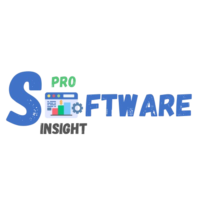The Role of ERP in Customer Relationship Management

Table of Contents:
Intro
What is ERP and How Does it Interact with CRM?
- Key Ways ERP Enhances CRM
- Benefits of Integrating ERP and CRM
- Challenges and Solutions
- Conclusion
In today’s fast-paced business environment, building and maintaining strong customer relationships is more critical than ever. Enterprises aim to not just attract customers but to keep them engaged and loyal. To achieve this, many companies rely on two essential tools: Enterprise Resource Planning (ERP) systems and Customer Relationship Management (CRM) systems. But how exactly does ERP contribute to effective CRM? Let’s explore.
What is ERP and How Does it Interact with CRM?
ERP systems are comprehensive software platforms designed to integrate various business processes, such as inventory management, finance, human resources, and supply chain management. CRM systems, on the other hand, focus specifically on managing customer interactions, tracking sales, and fostering relationships.
While they are distinct tools, ERP and CRM can work together seamlessly. Integrating ERP with CRM provides businesses with a holistic view of their operations and customers, enabling better decision-making and more personalized customer experiences.
Key Ways ERP Enhances CRM
- Centralized Data for a Unified Customer View
ERP systems consolidate information from various departments, creating a single source of truth. When integrated with CRM, this unified database provides a comprehensive view of the customer, including purchase history, payment status, and support interactions. This centralization ensures that every department has access to the same accurate and up-to-date information.
Actionable Insight: Use ERP data to personalize marketing campaigns and customer interactions based on historical trends and preferences. - Streamlined Order Management
With ERP integration, businesses can track the entire order lifecycle—from placement to delivery—while syncing this data with the CRM system. This visibility allows sales teams to provide real-time updates to customers and address potential issues proactively.Example: If a customer inquires about an order delay, the sales team can instantly access the status via the ERP system, enhancing trust and transparency.
- Enhanced Customer Service
ERP systems automate routine tasks and provide quick access to customer records, enabling faster response times and efficient service. For instance, a service representative can retrieve warranty details or payment histories instantly during a customer call, leading to more effective problem resolution.Tip: Train customer support teams to navigate ERP-integrated CRM systems efficiently for quicker service.
- Improved Forecasting and Reporting
ERP systems excel at data analysis and reporting. When integrated with CRM, this functionality helps businesses predict customer needs, identify trends, and optimize inventory. For example, analyzing seasonal buying patterns can help prepare targeted promotions that resonate with customers. - Seamless Financial Management
ERP systems manage financial transactions, including invoicing and payment tracking. By sharing this data with CRM, businesses can ensure smooth financial interactions with customers. Sales teams can access payment histories to offer tailored solutions, such as extended credit or discounts for loyal customers.Real-World Example: A loyal customer struggling with late payments could be offered flexible payment terms based on insights from the ERP system.
- Centralized Data for a Unified Customer View
Benefits of Integrating ERP and CRM
The synergy between ERP and CRM systems results in several tangible benefits:
- Increased Efficiency: Automating data sharing reduces manual entry, saving time and minimizing errors.
- Better Customer Retention: Comprehensive insights enable personalized experiences that foster loyalty.
- Scalability: An integrated system can grow with your business, supporting larger volumes of data and more complex operations.
- Enhanced Collaboration: Teams across departments can access relevant customer data, fostering cross-functional cooperation.
Challenges and Solutions
While the integration of ERP and CRM offers significant advantages, it can pose challenges:
- Implementation Costs: Integrating systems requires investment in technology and training. To mitigate costs, opt for scalable solutions that grow with your business.
- Data Migration Issues: Moving data between systems can lead to inconsistencies. Conduct thorough audits to ensure data accuracy during migration.
- User Adoption: Employees may resist new systems. Provide adequate training and demonstrate the benefits to ease the transition.
Conclusion
The integration of ERP with CRM is not just a technological advancement; it’s a strategic move toward enhancing customer satisfaction and business growth. By breaking down silos and enabling seamless data sharing, ERP systems empower businesses to deliver exceptional customer experiences.
For organizations looking to stay competitive in a customer-centric world, leveraging the combined power of ERP and CRM is not optional—it’s essential. Whether you’re a growing business or an established enterprise, investing in this integration can pave the way for long-term success.
